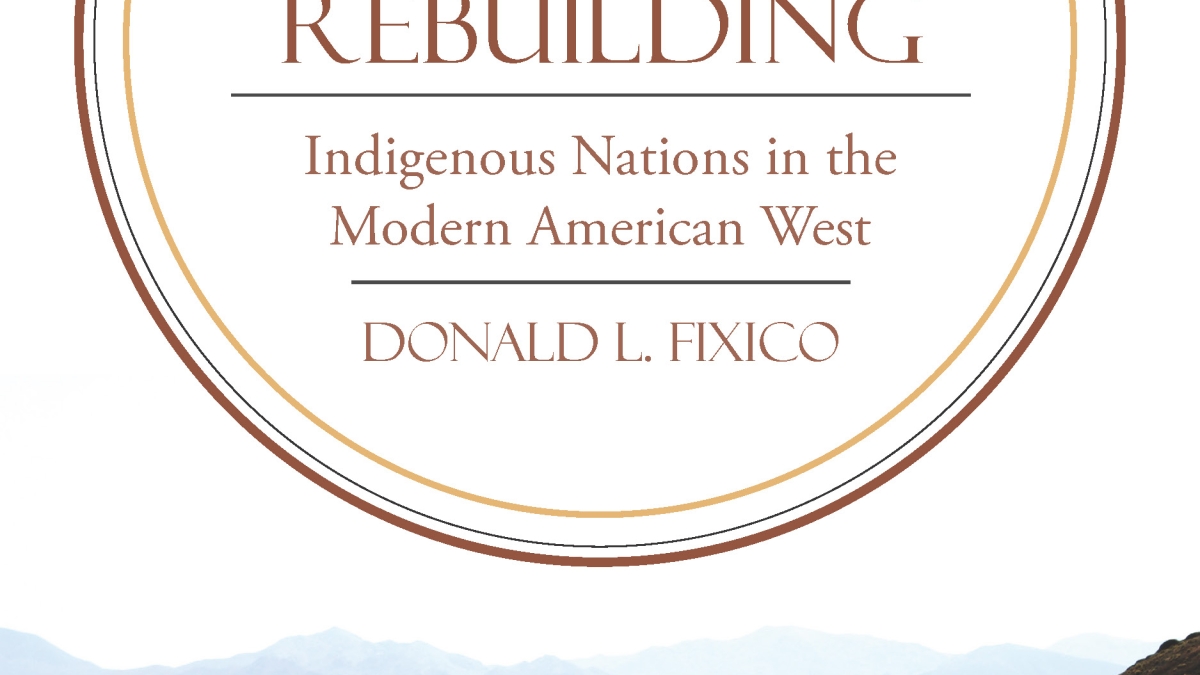New book on American Indian history offers lesson in resilience

As much as the American Indian narrative is about tragedy, it is equally a story of strength and resilience.
“Indian Resilience and Rebuilding: Indigenous Nations in the Modern American West,” by ASU Distinguished Professor of History Donald Fixico (Shawnee, Sac & Fox, Muscogee Creek and Seminole) examines this phenomenon in his latest book, published by the University of Arizona Press.
Looking at Indian life through struggles faced when reservations were established, through boarding school education and the move to bring American Indians into cities, among other events, brings the reader through experiences that were oftentimes traumatic, but also offered opportunities through adversity.
“The boarding schools were something so negative,” Fixico said. “As Indians overcame tyranny, they overcame the most negative part of this experience and made it a positive as they saw the value in education.”
It’s a pattern that has continued as American Indians have extrapolated tools from their experiences that have enabled rebuilding. Inspiration for Fixico’s 13th book stems from an experience where he watched an armored truck drive away from a casino on the Gila Indian Reservation. He was struck by the irony of the situation that was reversed 100 years ago when a government wagon would have been bringing in treaty-promised supplies to help Native people.
“The book is really about that turnaround,” he said.
It’s a dramatic shift from the late 1800s when there were only 237,000 Indians in the United States compared to the 5 million that lived there before European settlement began.
“That’s almost ethnic genocide,” Fixico said. “There were 1,600 wars and skirmishes that decimated the Indian population.”
From those dark days, rebuilding is examined through the eras of activism, natural resource development, Indian gaming, sacred land return and repatriation.
“Native people have reinvented themselves. They take the tools that have been used to repress them and utilize mainstream capitalism and education while retaining the old ways,” he said.
Seminal turning points in American Indian history include activism that took off during the 1960s and 70s in the era of Vietnam protests, when Indians began calling for recognition of treaty rights, among other issues.
“It was a very pivotal historical moment. Native people became more proactive rather than reactive,” Fixico said.
Among politicians who worked for change for American Indians during the era was President Richard Nixon, whose administration laid the foundation for Indian self determination where American Indians began to decide their own destinies.
“He listened to American Indian concerns. Nixon came from a poor background. He may have very well have identified with Indian people,” Fixico said. President Jimmy Carter was also instrumental with the passage of the Indian Religious Freedom Act and the Indian Child Welfare Act, both of 1978, during his administration.
Repatriation and sacred land return is another important issue that is addressed as a question of morality. “While people respect their own cemeteries and cultural artifacts, Indian graveyards and artifacts have been grossly desecrated,” Fixico writes.
“Native people don’t want to be disconnected from their past and families. When people take artifacts and human remains, it means disconnecting those individuals who pass away from their people and their community. To take them out of their circle means that you are being severed and you are being exiled. That is the worst thing for Indian people,” he said.
Natural resources development and Indian gaming have provided economic gain for many tribal nations in recent years. Indian gaming was initially started by the Seminoles in 1979.
“Indian gaming exploded in the 80s,” he said. “It’s the rise of Indian entrepreneurship.”
Ultimately the book is indicative of the cover photo of a man and boy walking on a dirt road toward the horizon and symbolically entering the future of Indian nations. Tools that they’re using include education, cultural navigation, indigenous leadership and an indigenous economy.
“We don’t know what the future holds. It’s coming from a very colonized past. The journey is about optimism, but it has been a very long road at the same time,” Fixico said. “If you have resilience, you can survive. When people are better equipped and you’ve developed your culture, education and skills, then you can rebuild. It’s a lesson for all communities and all people.”